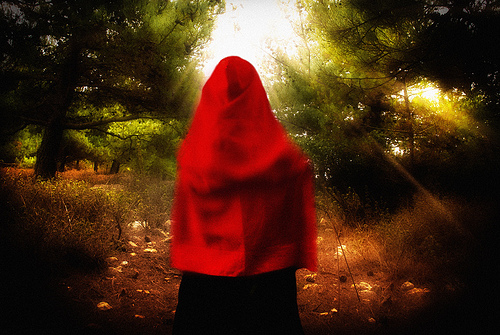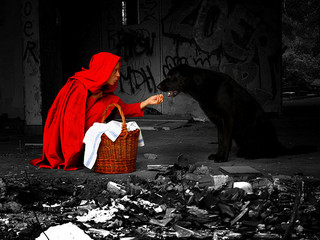 One of the ornaments that will come down from the attic in the next few weeks has a fairy wearing a blue gown on it; she’s sitting on a crescent moon. This picture has a quote below it: “If you want your children to be intelligent, read them fairytales. If you want them to be more intelligent, read them more fairytales.” It’s attributed to Albert Einstein.
One of the ornaments that will come down from the attic in the next few weeks has a fairy wearing a blue gown on it; she’s sitting on a crescent moon. This picture has a quote below it: “If you want your children to be intelligent, read them fairytales. If you want them to be more intelligent, read them more fairytales.” It’s attributed to Albert Einstein.
I’m not sure in what context Einstein said this, if he did at all. (The one source I could track down was as advice that Einstein may have given to a mother who wanted her child to be a scientist: “First, give him fairy tales; second, give him fairy tales, and third, give him fairy tales!”) And I have tried to give my children fairy tales—last year, for Christmas, I bought them a fairy tale book nearly as big as home plate with gorgeous illustrations.
But the truth is I never read it to them. I have it on my desk so I can read it myself. There are several other books that have migrated into my office, too: Tales from Old Ireland, Fireside Stories, Grimms’ Tales for Young and Old.
Many of these books have stories with similar characters and familiar-seeming plots. People have long been trying to trace the origins of some of these stories. And last week, one researcher reported a new way of doing this: phylogenetic analysis.
Other approaches that look at fairytales’ origins have classified them by where they’re from and when they likely appeared, looking at a few key commonalities between the stories. But fairytales disperse and evolve in a very similar way to species, according to study author Jamie Tehrani. Something so rooted in oral tradition leaves behind a spotty fossil record, and it’s not clear what traits of this mythical beast we call a story are inherited from the oldest known source.
 Tehrani built a phylogenetic tree for a group of tales featuring predators masquerading as someone we know—stories like “Little Red Riding Hood” and “The Wolf and the Kids“, which involves a wolf who appears at the door, in disguise, and eats up the brothers and sisters inside the house. By looking at 58 variations of these tales, and 72 plot and character variables—are there many children or just one? What kind of an animal is Grandmother? How does she disguise herself?—Tehrani found, among other things, that Red Riding Hood tales thought to originate in East Asia actually have elements of both of these story types, suggesting that these tales may have come from elsewhere and were then adapted by storytellers in places like Japan, China, and Korea.
Tehrani built a phylogenetic tree for a group of tales featuring predators masquerading as someone we know—stories like “Little Red Riding Hood” and “The Wolf and the Kids“, which involves a wolf who appears at the door, in disguise, and eats up the brothers and sisters inside the house. By looking at 58 variations of these tales, and 72 plot and character variables—are there many children or just one? What kind of an animal is Grandmother? How does she disguise herself?—Tehrani found, among other things, that Red Riding Hood tales thought to originate in East Asia actually have elements of both of these story types, suggesting that these tales may have come from elsewhere and were then adapted by storytellers in places like Japan, China, and Korea.
It seems like other evolutions of fairytales are happening, too, with morals and lessons being injected into versions aimed at kids. But the ones I remember keeping me up at night and keep me reading again have little of this: instead, they hint at life’s unpredictability (you might be killed if your last sibling was born a girl), that there are things you can’t stop even if you stay far away from the woods (your stepmother might want to eat your heart), and also that there are untold wonders that await (you could dance all night until your shoes fell apart.)

“Once we orient fairy tales toward children,” writes Harvard folklore expert Maria Tatar in a recent review, “we forget that they were engineered for entertainment, less invested in sending messages than in producing shock effects so powerful that to this day we feel compelled to talk about them, reinvent them and pass them on.”
And after reading about the books she describes, I ordered one. Maybe this time, I should just admit it: Fairy Tale Comics is just for me.
**
Images from Flickr users Christos Tsoumplekas and Ahef
One thought on “Once Upon a Phylogeny”
Comments are closed.